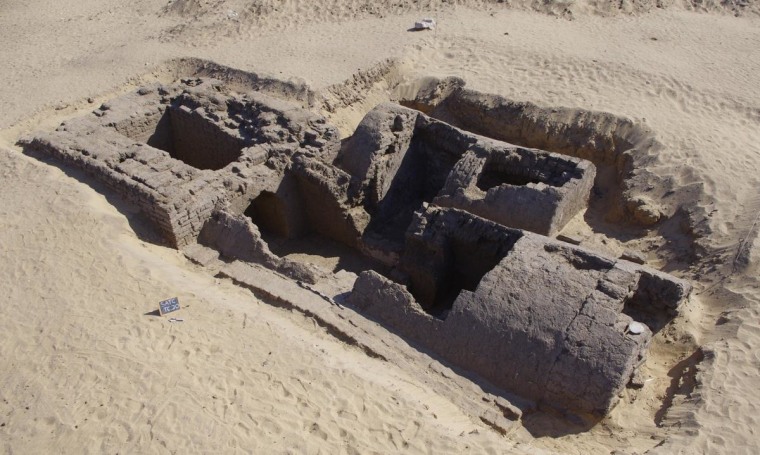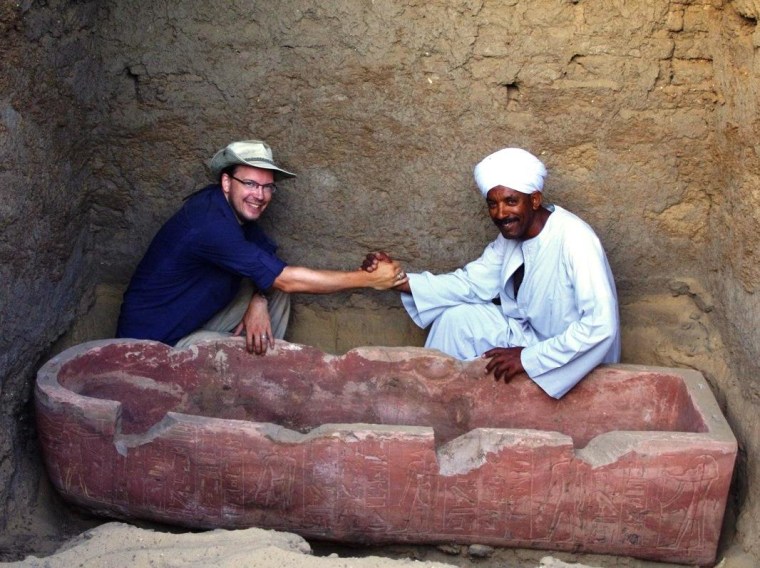A tomb newly excavated at an ancient cemetery in Egypt would have boasted a pyramid 7 meters (23 feet) high at its entrance, archaeologists say.
The tomb, found at the site of Abydos, dates back around 3,300 years. Within one of its vaulted burial chambers, a team of archaeologists found a finely crafted sandstone sarcophagus, painted red, which was created for a scribe named Horemheb.
The sarcophagus has images of several Egyptian gods on it and hieroglyphic inscriptions recording spells from the Book of the Dead that helped one enter the afterlife.

There is no mummy in the sarcophagus, and the tomb was ransacked at least twice in antiquity. Human remains survived the ransacking, however. Archaeologists found disarticulated skeletal remains from three to four men, 10 to 12 women and at least two children in the tomb. [Gallery: See Images of the Newly Found Tomb]
The chambers that the archaeologists uncovered would have originally resided beneath the surface, leaving only the steep-sided pyramid visible.
The pyramid itself "probably would have had a small mortuary chapel inside of it that may have held a statue or a stela giving the names and titles of the individuals buried underneath," the University of Pennsylvania's Kevin Cahail, who led excavations at the tomb, told Live Science.

Today, all that remains of the pyramid are the thick walls of the tomb entrance that would have formed the base of the pyramid. The other parts of the pyramid either haven't survived or have not yet been found. [Image Gallery: Amazing Egyptian Discoveries]
It was not uncommon at that time for tombs of elite individuals to contain small pyramids, Cahail said. He believes Horemheb's family had military ties that allowed them to afford such an elaborate tomb.
Cahail will be presenting results from last year's excavations in Portland, Ore., this weekend at the annual meeting of the American Research Center in Egypt.
— Owen Jarus, LiveScience
This is a condensed version of a report from LiveScience. Read the full report. Follow LiveScience on Twitter, Facebook and Google+. Original article on Live Science.